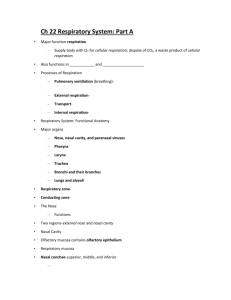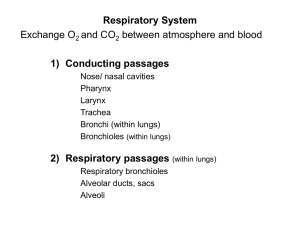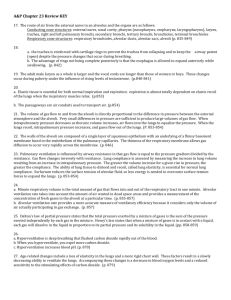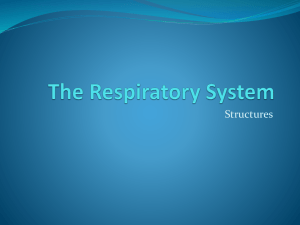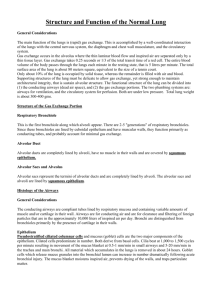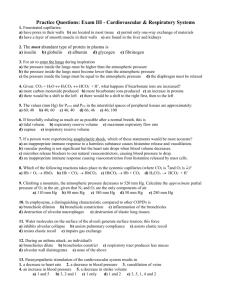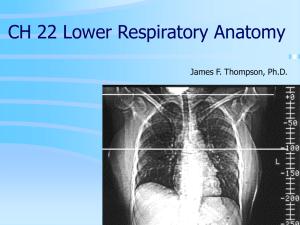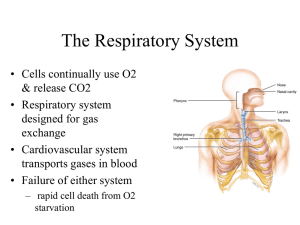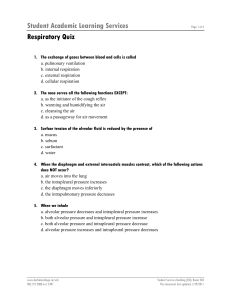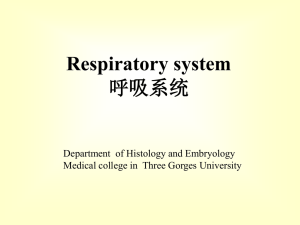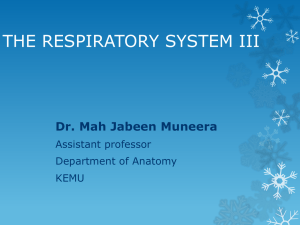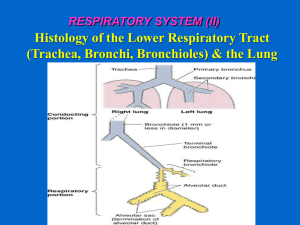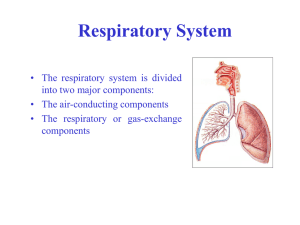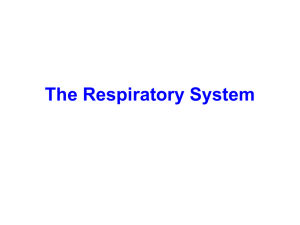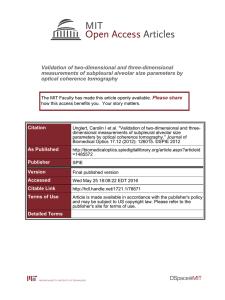The human pharynx is divided into three sections
advertisement
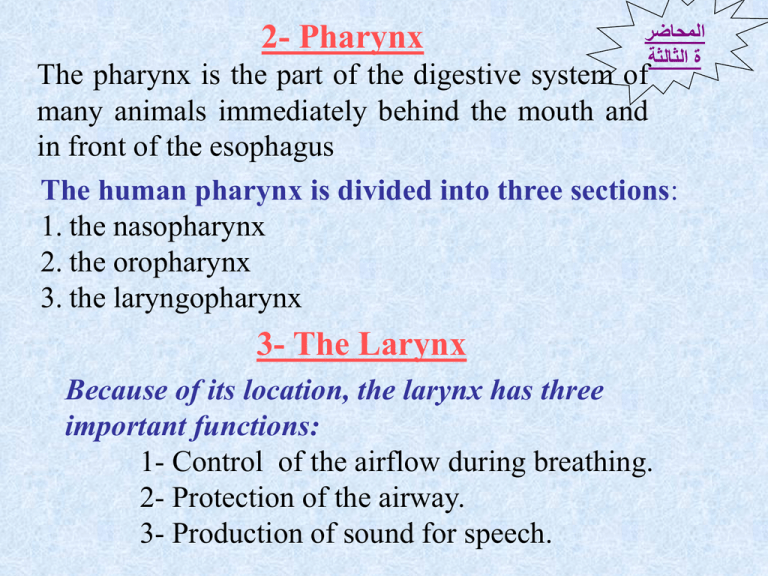
2- Pharynx المحاضر ة الثالثة The pharynx is the part of the digestive system of many animals immediately behind the mouth and in front of the esophagus The human pharynx is divided into three sections: 1. the nasopharynx 2. the oropharynx 3. the laryngopharynx 3- The Larynx Because of its location, the larynx has three important functions: 1- Control of the airflow during breathing. 2- Protection of the airway. 3- Production of sound for speech. 4- Epiglottis The epiglottis is the flap of cartilage lying behind the Tongue and in front of the entrance to the larynx . 5- The uvula Is a fleshy piece of muscle, tissue and mucous membrane that hangs down from the palate. It is the part that moves upward when we say, "Ah!". 6- The Trachea It is a tube 2 cm diameter and 10 cm in long. It is kept open by incomplete rings of cartilage the deficiency onthe posterior surface being filled in with fibrous and mascular tissue. The wall of trachea consists of: 1- Mucosa: it is formed of (A) Epithelium (B) Corium (Lamina Propria) 2- Submucosa 3- Fibro-Cartilagenous coat 7- Bronchi It is composed of: 1- Extra-pulmonary bronchi 2- Intra-pulmonary bronchi: a- Bronchioles b- Terminal Bronchioles c- Respiratory Bronchioles 8- The Alveoli, Alveolar Sacs and Alveolar Ducts •Alveolar Ducts : Long branching passages arise from respiratory bronchioles. •Alveolar Sac : is a group of alveoli which open into a common central space (the atrium). •The alveoli : are the minute "air spaces" which open into the alveolar ducts, and to alesser extent into the respiratory bronchioles. The Alveolar Phagocytes: They are phagocytic cells present free inside the lung alveoli. e.g 1- Dust Cells: 2- Heart Failure Cells: Types of alveolar epithelial cells: 1. Type I: Pneumocytes: flat squamous cells, constitute the major of the alveolar lining cells (95%). 2. Type II: pneumocytes: cuboidal cells represent 5% of the alveolar lining cells.
